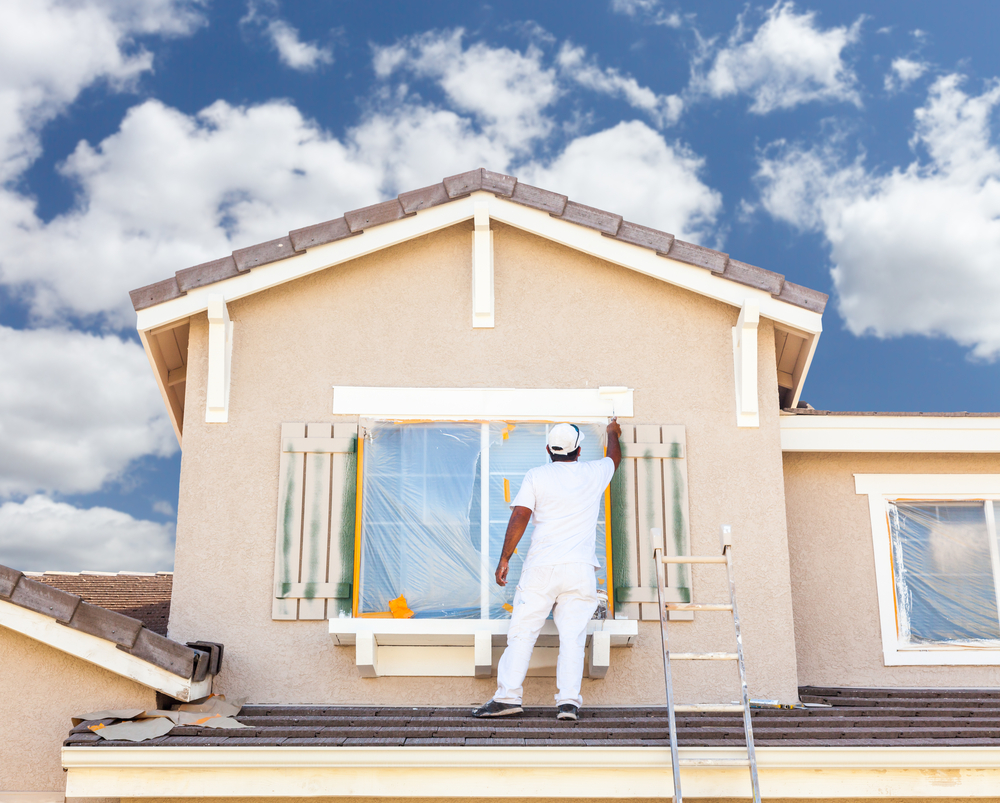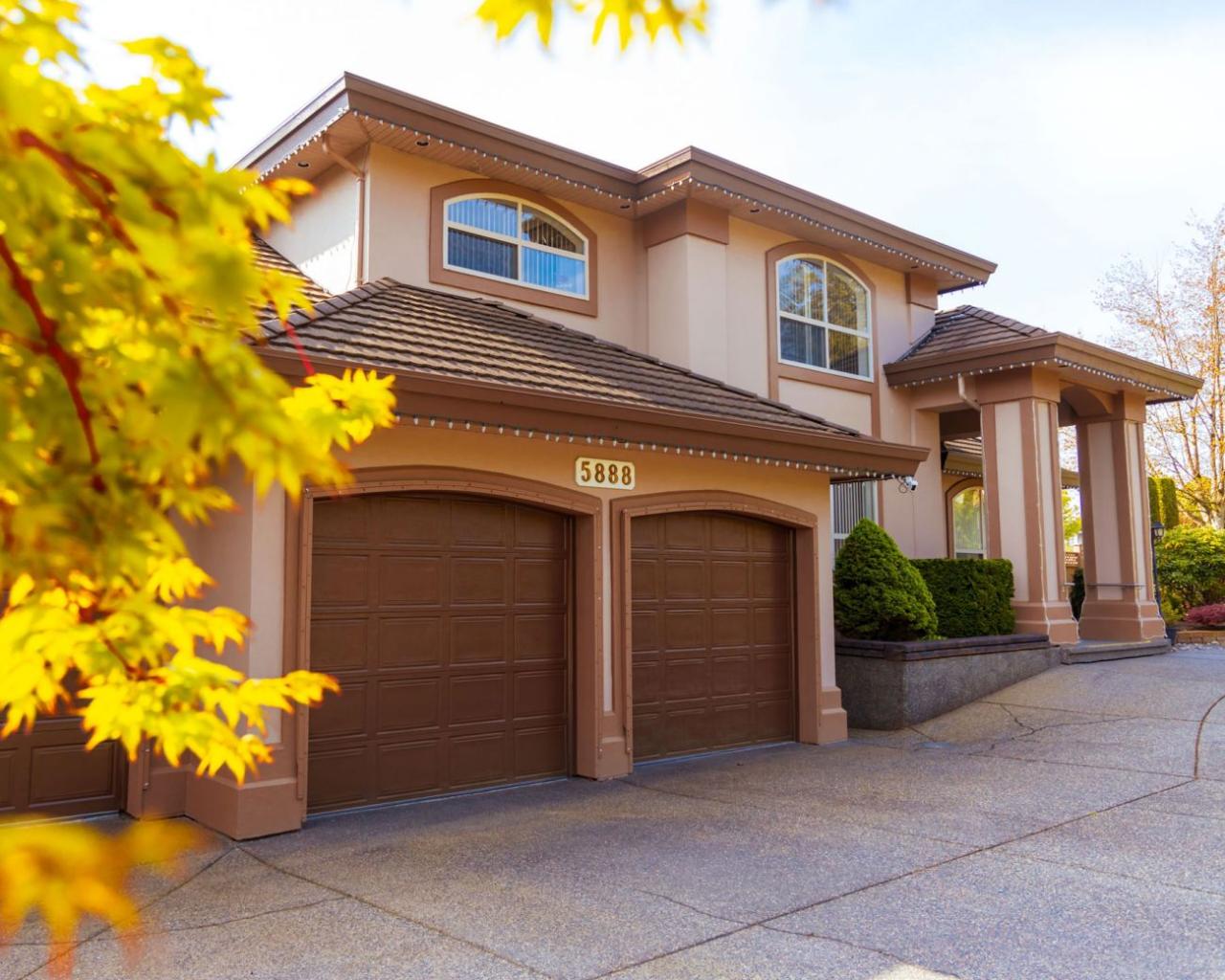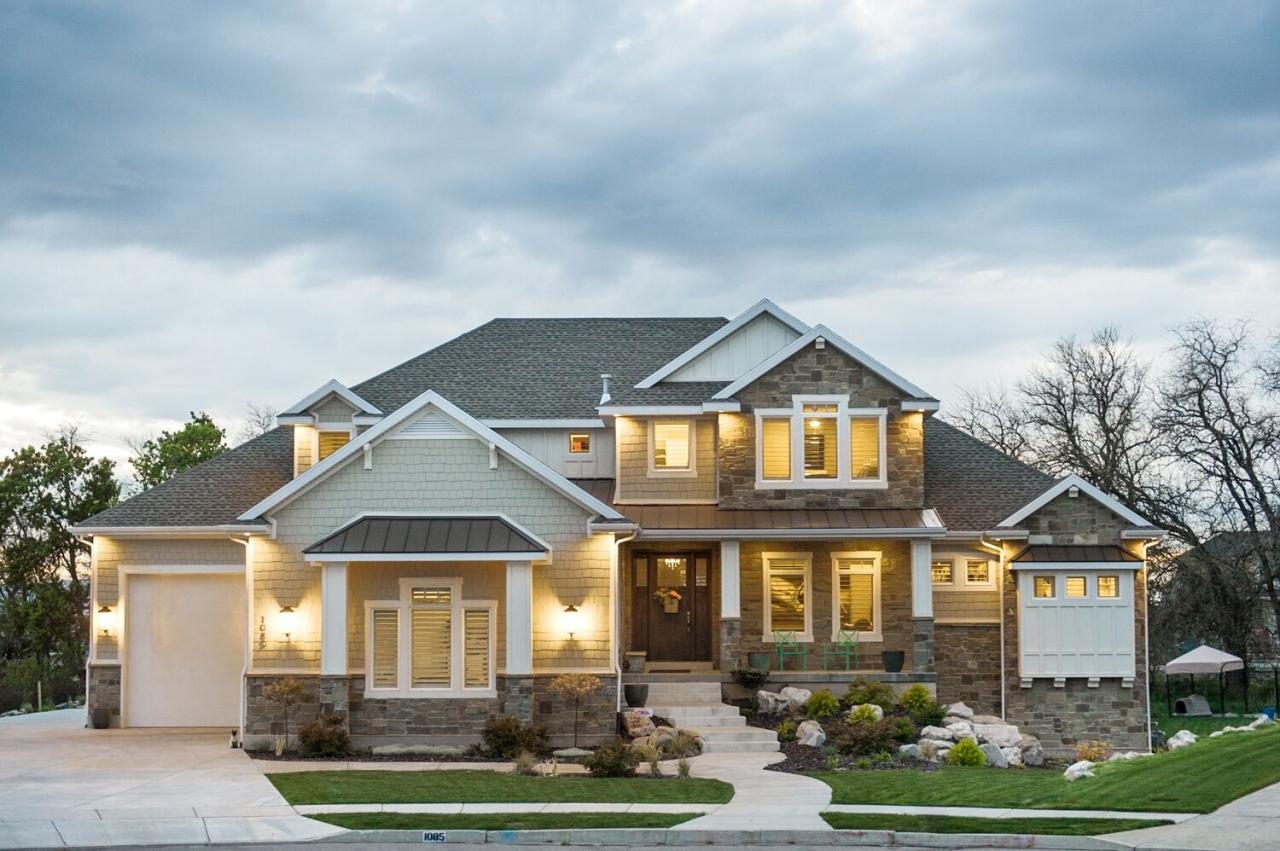Revamp Your Home: A Guide to Residential Exterior Painting
Residential exterior painting is more than just a fresh coat of paint - it's about transforming the look and feel of your home. From choosing the right colors to mastering application techniques, this guide covers everything you need to know to give your home a stunning makeover.
As we delve into the intricate process of residential exterior painting, you'll discover the key steps, tools, and tips that will help you achieve a professional finish that lasts for years to come.
Introduction to Residential Exterior Painting
Residential exterior painting refers to the process of applying paint or protective coatings to the outer surfaces of a home or building. This includes walls, siding, trim, doors, and other exterior elements that require paint for protection and aesthetic enhancement.
Maintaining a well-painted exterior is crucial for residential buildings as it serves as the first line of defense against harsh weather conditions, moisture, and other environmental factors. A fresh coat of paint not only enhances the curb appeal of a home but also helps prevent damage to the underlying structure, prolonging its lifespan.
Common Reasons for Exterior Painting
- Enhanced Curb Appeal: One of the primary reasons homeowners choose to paint the exterior of their homes is to improve the overall look and attractiveness of their property. A new paint job can instantly freshen up the appearance of a home, making it more visually appealing.
- Protection Against Elements: Paint acts as a protective barrier against elements such as rain, snow, UV rays, and mold. By applying a fresh coat of paint regularly, homeowners can safeguard their property from potential damage caused by these external factors.
- Increase Property Value: A well-maintained and freshly painted exterior can significantly increase the value of a home. It not only enhances the aesthetic appeal but also gives the impression that the property has been well cared for, making it more attractive to potential buyers.
- Prevent Rot and Decay: Painting the exterior surfaces helps seal out moisture, preventing wood rot, decay, and other structural issues. It serves as a protective layer that keeps the building materials in good condition, ultimately saving homeowners from costly repairs in the future.
Preparation for Residential Exterior Painting
When it comes to painting the exterior of a house, proper preparation is key to achieving a professional and long-lasting finish. Skipping or rushing through the preparation process can result in a subpar paint job that may not stand the test of time.
Steps for Preparing a House for Exterior Painting
- Inspect the Exterior: Begin by thoroughly inspecting the exterior of the house for any signs of damage, such as cracks, holes, or rot. These issues should be addressed before painting to ensure a smooth and even surface.
- Clean the Surface: Use a pressure washer or a hose to clean the exterior surface of the house to remove dirt, grime, and mildew. This step is crucial for promoting paint adhesion.
- Scrape and Sand: Remove any loose or peeling paint by scraping the surface with a paint scraper. Sanding the area smooth will help create a uniform surface for painting.
- Repair and Patch: Fill in any cracks or holes with a suitable filler and allow it to dry completely. Sand the patched areas to blend them seamlessly with the rest of the surface.
- Protect Surrounding Areas: Cover windows, doors, and any other areas that you do not want to paint with plastic sheeting or painter's tape to prevent accidental paint splatter.
Significance of Proper Surface Preparation
Proper surface preparation is essential before painting a house exterior because it:
- Ensures better adhesion of the paint, preventing peeling and flaking.
- Helps the paint go on smoothly and evenly, resulting in a professional finish.
- Extends the lifespan of the paint job, reducing the need for frequent repainting.
- Identifies and addresses any underlying issues that could affect the durability of the paint.
Common Tools and Materials for Prepping the Exterior of a House
- Pressure washer or hose for cleaning
- Paint scraper for removing old paint
- Sandpaper for smoothing surfaces
- Exterior filler for patching cracks and holes
- Plastic sheeting or painter's tape for protecting surrounding areas
Choosing the Right Paint for Residential Exterior

When it comes to painting the exterior of your home, selecting the right paint is crucial for achieving a long-lasting and visually appealing finish. With various types of exterior paints available in the market, it's essential to understand the factors that should influence your decision.
Different Types of Exterior Paints
- LATEX PAINT: Known for its durability and flexibility, latex paint is a popular choice for residential exteriors. It dries quickly and is resistant to fading and mildew.
- ACRYLIC PAINT: Acrylic paint offers excellent adhesion and water resistance, making it suitable for areas with high moisture levels. It also provides good color retention.
- ALKYD PAINT: Alkyd paint is known for its smooth finish and ability to cover imperfections. It is highly durable and offers great protection against harsh weather conditions.
Factors to Consider When Selecting Paint
- Climate: Choose a paint that can withstand the climate in your area, whether it's extreme heat, cold, or moisture.
- Surface Type: Consider the material of your exterior surface (e.g., wood, stucco, brick) and choose a paint that is suitable for that specific material.
- Color and Finish: Select a color that complements your home's architecture and a finish that suits your aesthetic preferences.
- Budget: While quality paint may come at a higher price, investing in high-quality paint can save you money in the long run by requiring fewer touch-ups and repaints.
Importance of High-Quality Paint
Choosing high-quality paint is essential for ensuring a durable and long-lasting finish on your residential exterior
Application Techniques for Residential Exterior Painting

When it comes to painting the exterior of your home, using the right application techniques is crucial for achieving a professional and long-lasting finish. Different surfaces like wood, stucco, and brick require specific methods to ensure proper coverage and durability.
Painting Techniques for Different Exterior Surfaces
- Wood: Start by sanding the surface to remove any imperfections. Use a high-quality brush to apply paint in the direction of the wood grain for a smooth finish. Consider applying a primer before painting to enhance adhesion.
- Stucco: Clean the surface thoroughly and repair any cracks or damages. Use a roller with a thick nap to ensure paint gets into the textured surface. Consider using an elastomeric paint for added flexibility.
- Brick: Clean the brick surface and allow it to dry completely. Apply a masonry primer before painting to improve adhesion. Use a brush to paint the mortar joints first, then switch to a roller for the brick faces.
Tips for Achieving a Smooth Finish
- Work in small sections to ensure wet edges and avoid visible brush marks.
- Avoid painting in direct sunlight or on windy days to prevent premature drying and uneven application.
- Use high-quality paint and tools to achieve a professional finish.
- Apply multiple thin coats rather than one thick coat to prevent drips and runs.
Brushes, Rollers, and Sprayers for Painting
- Brushes: Ideal for detailed work and cutting in edges. Choose a high-quality brush with synthetic bristles for smooth application.
- Rollers: Efficient for covering large areas quickly. Use a roller with the appropriate nap length for the surface texture.
- Sprayers: Provide a fast and even application for smooth surfaces. Adjust the spray pattern and pressure according to the surface being painted.
Maintenance and Care After Residential Exterior Painting

After completing the residential exterior painting project, it is important to implement proper maintenance practices to ensure the longevity of the paint job and the overall appearance of the house. Addressing common issues like peeling, fading, or blistering promptly can help preserve the freshly painted exterior.
Here are some tips on how to maintain and care for your home after residential exterior painting:
Post-Painting Maintenance Practices
- Regularly inspect the exterior of your house for any signs of damage or wear on the paint.
- Touch up any areas where the paint is peeling or blistering to prevent further damage.
- Consider applying a clear coat or sealant to protect the paint from UV rays and harsh weather conditions.
Addressing Common Issues
- To address peeling paint, scrape off the loose paint, sand the area, prime it, and then repaint the affected area.
- If you notice fading, consider using a paint color with UV protection or applying a protective coating over the paint.
- Blistering paint can be caused by moisture issues. Properly seal any gaps or cracks where water can seep in and repaint the affected areas.
Cleaning and Preserving the Exterior
- Regularly wash the exterior of your house with a mild detergent and water to remove dirt and debris.
- Avoid using harsh chemicals or abrasive scrubbers that could damage the paint.
- Trim back any bushes or trees that may be touching the house to prevent damage to the paint.
Last Recap
In conclusion, residential exterior painting is a rewarding investment that not only enhances the curb appeal of your home but also protects it from the elements. By following the guidelines Artikeld in this comprehensive guide, you can ensure a successful painting project that leaves your home looking beautiful and well-maintained.
FAQ Overview
What is the best time of year to paint the exterior of a house?
The ideal time for residential exterior painting is during the spring or fall when the weather is mild and dry, ensuring optimal conditions for paint application and drying.
Can I paint over existing paint on my house's exterior?
Yes, you can paint over existing paint as long as it is in good condition. Proper surface preparation and priming are essential for a successful paint job.
How long does residential exterior painting typically last?
A high-quality paint job on the exterior of a house can last anywhere from 5 to 10 years, depending on factors such as climate and maintenance.
Are there eco-friendly paint options available for residential exterior painting?
Yes, there are eco-friendly paints made from sustainable materials and low in volatile organic compounds (VOCs) that are safe for residential exterior use.




